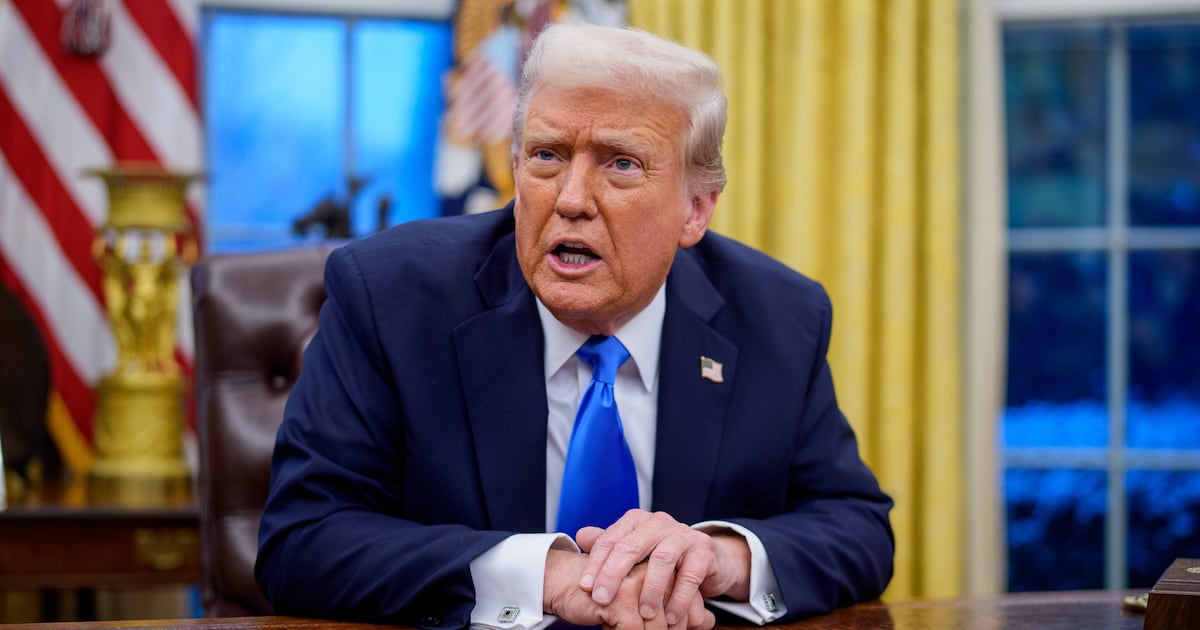The U.S. Navy, in an unprecedented move, is sending a third carrier strike force to the Western Pacific.
The Nimitz group, Carrier Strike Group 11, will leave Naval Base Kitsap-Bremerton on Thursday to join the strike groups centered around the Carl Vinson and Ronald Reagan.
The presence of three aircraft carriers in the region suggests President Donald Trump is going to force the North Korea issue soon.
Sources have told both Voice of America and the Japanese newspaper Asahi Shimbun that the deployment of the Nimitz is meant to serve as a warning to North Korea. “The Trump administration deployed the strike force to put pressure on Pyongyang to refrain from more nuclear and missile tests amid mounting concern that it will soon acquire the capability to launch intercontinental ballistic missiles,” Asahi reported.
There is plenty to warn the North Koreans about. They are apparently ready to conduct their sixth test of a nuclear device. The device, in all probability, has already been buried in a tunnel at the Punggye-ri test site in the northeastern part of the country. Satellite imagery indicates that all initial preparations have been completed.
Moreover, the North in recent days has been launching ballistic missiles at the rate of about one a week in what is obviously an accelerated program.
Recent efforts have generally been successful. On May 14, for instance, the Hwasong-12 was fired at a high trajectory to test the reentry into the atmosphere of a warhead. Initial reports say the heat shielding worked, which means Pyongyang has passed a crucial technical threshold. As a result, Kim Jong Un, the North Korean supremo, should be able to hit the lower 48 states with a nuclear warhead in just a few years.
Most analysts say the Hwasong-12 is just an intermediate-range missile, but some think it is in fact an intercontinental one. Its range is of some interest because, in response to Kim’s Jan. 1 boast, Trump said the North was never going to launch a long-range missile. “It won’t happen!” Trump, then president-elect, tweeted.
And this is where the Nimitz comes in. The carrier was scheduled to deploy to the Middle East, but now it has been rerouted to the Western Pacific because of the tensions on the Korean peninsula.
The Carl Vinson is already in the Sea of Japan, where it will participate in drills with the Reagan. It is not clear whether Nimitz will join the other two carriers, but the message of its redeployment is clear.
“I served in the U.S. Navy from 1986 to 2015, and I do not remember a time that the U.S. has ever deployed three aircraft carrier strike groups to the Korean peninsula,” James Fanell, former director of Intelligence and Information Operations for the U.S. Pacific Fleet, told me Saturday. “If I were Kim Jong Un, I’d move deep underground.”
That would be a good place for the North Korean leader. As Fanell says, “Make no mistake: The target list for North Korea has been continuously updated during the past 50 years.”
We may think Kim Jong Un should be worried by the presence of three carrier strike groups near his shores, but he may not be all that concerned. “Lots of firepower can deter only if the intended target feels genuinely threatened by it,” June Teufel Dreyer, a University of Miami political science professor and a leading Asia watcher, told me. “The U.S. has backed off enough times in the past that Kim probably doesn’t believe that we will use the firepower on him.”
And as Arthur Waldron of the University of Pennsylvania has said many times, Washington has continually taught autocrats to disregard its warnings.
Should Kim think Trump is bluffing with the Carl Vinson, the Ronald Reagan, and the Nimitz and he proceeds with his launches and detonations, the American president will find himself in an uncomfortable position. As Dreyer points out, “Bringing in three carrier groups and not using them sends a bad signal.”
Kim may feel the three strike groups are irrelevant because he can, if the U.S. hits his nuke and missile sites, order the destruction of Seoul, a good part of the rest of South Korea, and Japan in retaliation. As Secretary of Defense James Mattis said a week ago at a Pentagon press briefing, “If this goes to a military solution, it’s going to be tragic on an unbelievable scale.”
Yet a tragedy of that scale is possible. As retired Adm. Samuel Locklear, once head of U.S. Pacific Command, said in New York last week, “Just because it’s tragic doesn’t mean he won’t do it.”
And the probability of America using force may just have gone up. South Korean President Moon Jae-in, elected on May 9, made statements during the campaign that sounded inconsistent with the U.S.-South Korea mutual defense treaty. Should Moon carry through on his threats and move his country closer to China and North Korea, Trump could conceivably decide that the lives of South Koreans are not his primary concern. In these circumstances, an attack on the North’s facilities becomes conceivable.
Trump has often talked about America disarming Kim on its own should China not help, and there now looks to be a deadline for getting the job done. Acting Assistant Secretary of State Susan Thornton told reporters in Beijing on Friday that North Korea is a “time-limited problem set.”
In common English, that means Trump wants a resolution “as soon as possible.”
So what is the timeframe the president has in mind? Thornton says this is “not going to be a matter of years.”
And maybe not even a matter of months. With the third carrier strike group set to leave port in days, perhaps Trump is thinking of the time it takes the Nimitz to cross the Pacific.






